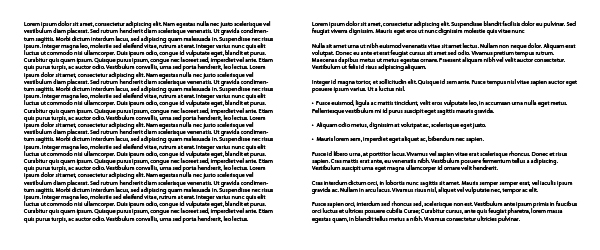Top 10 Print Copywriting Mistakes to Avoid

It’s so easy to get caught up in designing the visual aesthetics of a document or product (picking out images, fonts, color schemes, and so forth) that we sometimes overlook the actual message we’re presenting. Careless copywriting can lead to embarrassing mistakes. It’s important to give any document an attractive layout and design, but it’s equally important to present your written copy in a clear, professional, and readable way.
Nobody’s perfect, but with a little time and effort, you can avoid the most common mistakes people make when writing print copy.
-
Failing to Proofread and Spellcheck
Even master typists and spelling bee champions can occasionally make an error without realizing it. A spelling or grammar mistake can shatter the credibility and authority of your entire document. Safeguarding your reputation is certainly worth a few minutes of proofreading, so be sure to check and double-check your writing.
-
Too Long
Ever seen the abbreviation “tl;dr” online? It stands for “too long; didn’t read.” The same goes for print copywriting – the longer the copy, the more likely the reader is to stop reading. Long copy can be useful for many situations, but it’s best to be quick and concise when you’re writing for a promotional product or brochure. Chances are that you’ve got a limited amount of space, so it’s important to make every sentence count.
-
“Wall of Text”
Never underestimate the power of paragraphs and line breaks. Writing everything as one big paragraph creates an intimidating “wall of text” that many people won’t bother reading. Break up your text into smaller paragraphs to make it more digestible and easy to skim. Bullet points are handy for highlighting important elements in your writing, and creating a good balance of text and “white space.”

See how the version on the left is almost crushingly dense?
Using line breaks makes text much more inviting. -
Too Impersonal
In an effort to sound professional and authoritative, print writers can sometimes end up sounding excessively formal and stilted. Try having someone read your copywriting out loud. If it’s boring to listen to, it’s likely boring to read.
A friendly, casual, and conversational tone makes people feel comfortable and much more likely to keep reading.
-
Awkward Phrasing
Which sounds better: “Well-written copy is the key to success,” or “Having well-written copywriting gives you a successful paradigm so as to succeed”? Simplified sentences have a smoother flow and are easier for your reader to understand. Try to avoid bulky, wordy padding in your copy and cut straight to the point. It’s a good idea to keep most sentences at an average of around 15 words.
-
 Passive Voice
Passive VoicePassive voice is a sentence structure where the subject “is acted” upon as opposed to performing the action itself. “The dog buried the bone” is active voice. “The bone was buried by the dog,” is passive voice.
Passive voice tends to sound wordy and awkward, and lacks the impact and immediacy of active voice. With some exceptions, it’s usually best to use active voice whenever possible.
-
Not Writing with Your Audience in Mind
Know who your target audience is. Are they CEOs? Employees? Parents? Children? You should adapt the tone and content of your print writing based on the audience you expect to read it.
Remember to concentrate your attention on your audience instead of yourself, and talk about benefits instead of features. It’s always tempting to drone on about how great your company is, but readers are more interested in how your company can benefit them. Think about their wants and needs, and speak directly to them by using words like “you.” Focus on ways that your business, service, or event is appealing and attractive to consumers.
-
Forgettable, Unemotional Writing
Copy is only effective as long as people remember it. We’re so saturated with media these days that bland, boring copywriting gets tuned right out.
Avoid using clichés such as “cutting edge” and “one stop service.” They’re not very descriptive and people tend to gloss them over. Instead, tap into your audience’s “sense memory” by appealing to their emotions. Use a story or an example that demonstrates what makes your company unique and effective.
-
Burying the Lead
If the reader has to get halfway through the paragraph before they figure out the main point you’re trying to get across, you’ve probably already lost them. Headlines and subheadings help to hold the reader’s interest and make a document much easier to navigate. Be sure to make each heading catchy, compelling, and descriptive to draw people in, and pay special attention to your opening paragraph.
-
No Call to Action
Getting a customer to buy a product, visit a website, or perform any other desired action is what those in the ad business call “conversion.” The fundamental way to convert is to tell people what you actually want them to do; a “call to action.” Sounds simple, but you’d be surprised at how many people forget to include this little detail. Don’t bombard your reader with demands, but don’t miss out on achieving the ultimate goal of the document.
Conclusion
It’s often said that the key to writing is rewriting. The best way to prevent all of these print copywriting mistakes and blunders is to simply go back and reread your copy (or even better, have someone else read it), paying close attention to details you may have missed. Refine and improve your writing until it positively sparkles.
Posted in Copywriting
Don`t neglect your friends, share this right away.





Leave a Reply